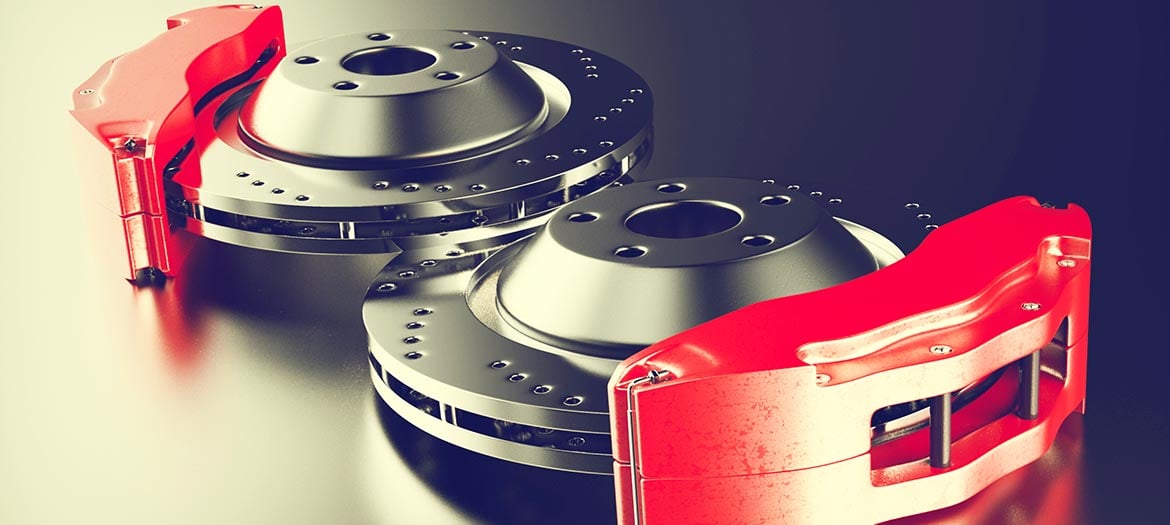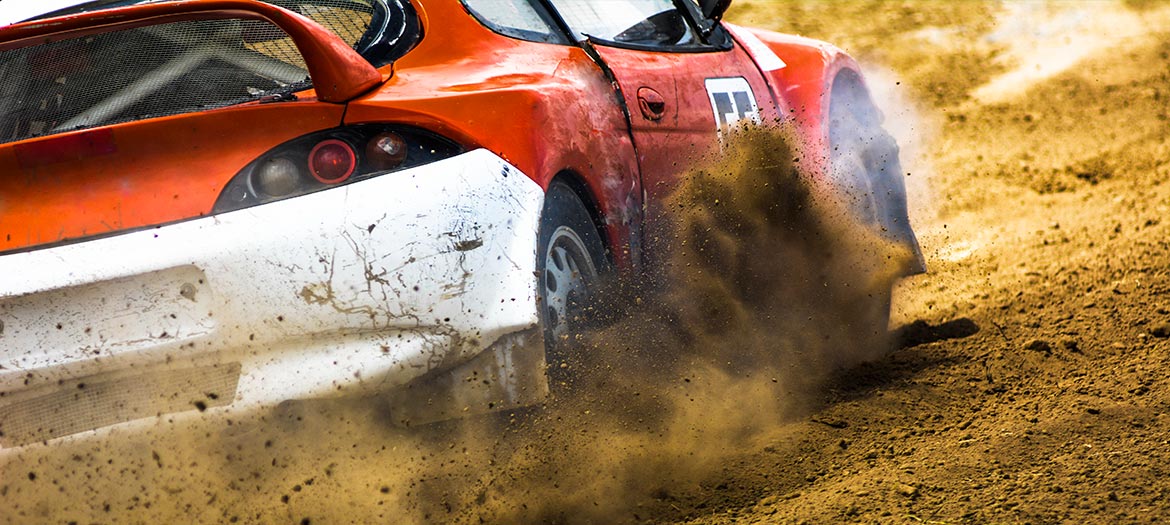Could not find a Solr index corresponding to your website and environment. Your subscription contains these indexes: EMRT-184319.01test.wompnd1901, EMRT-184319.01live.wompnd951, EMRT-184319.01test.wompnd2101, EMRT-184319.01dev.wompnd1741, EMRT-184319.01test.wompnd136, EMRT-184319.01test.wompnd2446, EMRT-184319.01test.wompnd1271, EMRT-184319.01live.wompnd141, EMRT-184319.01test.wompnd161, EMRT-184319.01live.wompnd1921, EMRT-184319.01dev.wompnd5002096dev, EMRT-184319.01live.wompnd1916, EMRT-184319.01live.wompnd2191, EMRT-184319.01live.wompnd1361, EMRT-184319.01live.wompnd1826, EMRT-184319.01live.wompnd566, EMRT-184319.01live.wompnd1501, EMRT-184319.01dev.wompnd1676, EMRT-184319.01live.wompnd1871, EMRT-184319.01live.wompnd2166, EMRT-184319.01live.wompnd1031, EMRT-184319.01live.wompnd3896, EMRT-184319.01live.wompnd651, EMRT-184319.01test.wompnd1061, EMRT-184319.01dev.wompnd2281, EMRT-184319.01test.wompnd2151, EMRT-184319.01live.wompnd601, EMRT-184319.01live.wompnd2246, EMRT-184319.01test.wompnd5001716test, EMRT-184319.01live.wompnd121, EMRT-184319.01test.wompnd1896, EMRT-184319.01dev.wompnd2211, EMRT-184319.01live.wompnd2566, EMRT-184319.01test.wompnd1891, EMRT-184319.01live.wompnd1381, EMRT-184319.01test.wompnd2156, EMRT-184319.01test.wompnd1886, EMRT-184319.01test.wompnd2111, EMRT-184319.01live.wompnd1901, EMRT-184319.01test.wompnd2216, EMRT-184319.01live.wompnd2421, EMRT-184319.01test.wompnd1826, EMRT-184319.01live.wompnd2361, EMRT-184319.01dev.wompnd161, EMRT-184319.01live.wompnd2431, EMRT-184319.01test.wompnd2146, EMRT-184319.01live.wompnd166, EMRT-184319.01test.wompnd1321, EMRT-184319.01live.wompnd2371, EMRT-184319.01test.wompnd1231, EMRT-184319.01live.wompnd2241, EMRT-184319.01live.wompnd866, EMRT-184319.01live.wompnd756, EMRT-184319.01live.wompnd2151, EMRT-184319.01live.wompnd1211, EMRT-184319.01dev.wompnd1321, EMRT-184319.01live.wompnd136, EMRT-184319.01live.wompnd1756, EMRT-184319.01live.wompnd861, EMRT-184319.01live.wompnd2396, EMRT-184319.01live.wompnd2441, EMRT-184319.01test.wompnd1431, EMRT-184319.01test.wompnd1031, EMRT-184319.01live.wompnd1726, EMRT-184319.01live.wompnd1171, EMRT-184319.01live.wompnd1666, EMRT-184319.01live.wompnd2046, EMRT-184319.01live.wompnd2176, EMRT-184319.01test.wompnd2011, EMRT-184319.01dev.wompnd1266, EMRT-184319.01dev.wompnd121, EMRT-184319.01test.wompnd1671, EMRT-184319.01dev.wompnd116, EMRT-184319.01live.wompnd2111, EMRT-184319.01live.wompnd1671, EMRT-184319.01dev.wompnd1211, EMRT-184319.01test.wompnd1851, EMRT-184319.01live.wompnd5296, EMRT-184319.01live.wompnd1621, EMRT-184319.01test.wompnd1611, EMRT-184319.01test.wompnd126, EMRT-184319.01test.wompnd1811, EMRT-184319.01live.wompnd1351, EMRT-184319.01test.wompnd1786, EMRT-184319.01live.wompnd3801, EMRT-184319.01test.wompnd2341, EMRT-184319.01live.wompnd2226, EMRT-184319.01live.wompnd2636, EMRT-184319.01test.wompnd1111, EMRT-184319.01live.wompnd2276, EMRT-184319.01dev.wompnd926, EMRT-184319.01test.wompnd1616, EMRT-184319.01live.wompnd126, EMRT-184319.01dev.wompnd1091, EMRT-184319.01live.wompnd1891, EMRT-184319.01test.wompnd1986, EMRT-184319.01test.wompnd2116, EMRT-184319.01test.wompnd2081, EMRT-184319.01test.wompnd1741, EMRT-184319.01live.wompnd2491, EMRT-184319.01test.wompnd2196, EMRT-184319.01live.wompnd4156, EMRT-184319.01test.wompnd2296, EMRT-184319.01live.wompnd2006, EMRT-184319.01test.wompnd1776, EMRT-184319.01test.wompnd1036, EMRT-184319.01live.wompnd1331, EMRT-184319.01live.wompnd2716, EMRT-184319.01live.wompnd2321, EMRT-184319.01test.wompnd2126, EMRT-184319.01live.wompnd2296, EMRT-184319.01live.wompnd1061, EMRT-184319.01live.wompnd1446, EMRT-184319.01test.wompnd1681, EMRT-184319.01live.wompnd1041, EMRT-184319.01test.wompnd1266, EMRT-184319.01live.wompnd1266, EMRT-184319.01live.wompnd2811, EMRT-184319.01live.wompnd116, EMRT-184319.01live.wompnd2221, EMRT-184319.01live.wompnd1961, EMRT-184319.01live.wompnd2776, EMRT-184319.01test.wompnd1751, EMRT-184319.01live.wompnd2536, EMRT-184319.01live.wompnd1876, EMRT-184319.01live.wompnd2216, EMRT-184319.01live.wompnd2196, EMRT-184319.01dev.wompnd2221, EMRT-184319.01live.wompnd1271, EMRT-184319.01dev.wompnd2341, EMRT-184319.01test.wompnd2226, EMRT-184319.01test.wompnd1946, EMRT-184319.01dev.wompnd1401, EMRT-184319.01live.wompnd1431, EMRT-184319.01live.wompnd2316, EMRT-184319.01dev.wompnd1501, EMRT-184319.01live.wompnd1926, EMRT-184319.01test.wompnd1961, EMRT-184319.01test.wompnd2061, EMRT-184319.01test.wompnd116, EMRT-184319.01live.wompnd2161, EMRT-184319.01dev.wompnd1391, EMRT-184319.01dev.wompnd1766, EMRT-184319.01test.wompnd2091, EMRT-184319.01dev.wompnd1051, EMRT-184319.01live.wompnd1306, EMRT-184319.01test.wompnd2256, EMRT-184319.01test.wompnd1936, EMRT-184319.01test.wompnd2066, EMRT-184319.01dev.wompnd1041, EMRT-184319.01live.wompnd2016, EMRT-184319.01dev.wompnd2006, EMRT-184319.01test.wompnd1841, EMRT-184319.01test.wompnd1391, EMRT-184319.01live.wompnd2231, EMRT-184319.01test.wompnd801, EMRT-184319.01test.wompnd2051, EMRT-184319.01live.wompnd2011, EMRT-184319.01test.wompnd111, EMRT-184319.01test.wompnd1706, EMRT-184319.01live.wompnd1736, EMRT-184319.01test.wompnd2021, EMRT-184319.01live.wompnd1881, EMRT-184319.01live.wompnd1856, EMRT-184319.01live.wompnd801, EMRT-184319.01test.wompnd1761, EMRT-184319.01live.wompnd1896, EMRT-184319.01test.wompnd1621, EMRT-184319.01live.wompnd5031, EMRT-184319.01live.wompnd791, EMRT-184319.01test.wompnd1661, EMRT-184319.01test.wompnd1996, EMRT-184319.01test.wompnd1666, EMRT-184319.01test.wompnd2241, EMRT-184319.01live.wompnd941, EMRT-184319.01live.wompnd2101, EMRT-184319.01dev.wompnd1381, EMRT-184319.01live.wompnd1146, EMRT-184319.01live.wompnd1966, EMRT-184319.01live.wompnd1831, EMRT-184319.01test.wompnd1381, EMRT-184319.01test.wompnd106, EMRT-184319.01live.wompnd3676, EMRT-184319.01live.wompnd2291, EMRT-184319.01test.wompnd1856, EMRT-184319.01live.wompnd3701, EMRT-184319.01dev.wompnd1171, EMRT-184319.01dev.wompnd1336, EMRT-184319.01live.wompnd1711, EMRT-184319.01test.wompnd1576, EMRT-184319.01test.wompnd1771, EMRT-184319.01dev.wompnd2326, EMRT-184319.01test.wompnd1656, EMRT-184319.01test.wompnd2326, EMRT-184319.01live.wompnd536, EMRT-184319.01test.wompnd1636, EMRT-184319.01dev.wompnd1586, EMRT-184319.01live.wompnd3556, EMRT-184319.01test.wompnd386, EMRT-184319.01live.wompnd1426, EMRT-184319.01live.wompnd881, EMRT-184319.01dev.wompnd1281, EMRT-184319.01dev.wompnd136, EMRT-184319.01live.wompnd1841, EMRT-184319.01test.wompnd1806, EMRT-184319.01test.wompnd2016, EMRT-184319.01live.wompnd1336, EMRT-184319.01live.wompnd2086, EMRT-184319.01live.wompnd111, EMRT-184319.01dev.wompnd2736, EMRT-184319.01test.wompnd1351, EMRT-184319.01dev.wompnd1276, EMRT-184319.01live.wompnd2106, EMRT-184319.01dev.wompnd2596, EMRT-184319.01test.wompnd1921, EMRT-184319.01test.wompnd1801, EMRT-184319.01live.wompnd1956, EMRT-184319.01test.wompnd141, EMRT-184319.01live.wompnd161, EMRT-184319.01test.wompnd1406, EMRT-184319.01test.wompnd1091, EMRT-184319.01live.wompnd1796, EMRT-184319.01live.wompnd2341, EMRT-184319.01live.wompnd2456, EMRT-184319.01live.wompnd2076, EMRT-184319.01live.wompnd546, EMRT-184319.01dev.wompnd111, EMRT-184319.01dev.wompnd1036, EMRT-184319.01dev.wompnd1991, EMRT-184319.01live.wompnd556, EMRT-184319.01live.wompnd1611, EMRT-184319.01live.wompnd2326, EMRT-184319.01dev.wompnd1406, EMRT-184319.01test.wompnd1966, EMRT-184319.01live.wompnd1816, EMRT-184319.01live.wompnd1036, EMRT-184319.01dev.wompnd1431, EMRT-184319.01live.wompnd1051, EMRT-184319.01live.wompnd1776, EMRT-184319.01test.wompnd2186, EMRT-184319.01test.wompnd2726, EMRT-184319.01test.wompnd1716, EMRT-184319.01live.wompnd2601, EMRT-184319.01dev.wompnd2726, EMRT-184319.01live.wompnd2591, EMRT-184319.01test.wompnd1756, EMRT-184319.01live.wompnd146, EMRT-184319.01live.wompnd3751, EMRT-184319.01live.wompnd811, EMRT-184319.01dev.wompnd106, EMRT-184319.01test.wompnd2176, EMRT-184319.01dev.wompnd2456, EMRT-184319.01live.wompnd3706, EMRT-184319.01live.wompnd1801, EMRT-184319.01live.wompnd1111, EMRT-184319.01live.wompnd1761, EMRT-184319.01test.wompnd411, EMRT-184319.01dev.wompnd1351, EMRT-184319.01live.wompnd4446, EMRT-184319.01test.wompnd1911, EMRT-184319.01live.wompnd2706, EMRT-184319.01live.wompnd846, EMRT-184319.01test.wompnd2246, EMRT-184319.01live.wompnd1976, EMRT-184319.01live.wompnd3881, EMRT-184319.01live.wompnd1936, EMRT-184319.01live.wompnd2146, EMRT-184319.01test.wompnd1726, EMRT-184319.01test.wompnd2336, EMRT-184319.01test.wompnd1106, EMRT-184319.01test.wompnd1736, EMRT-184319.01live.wompnd2436, EMRT-184319.01live.wompnd2266, EMRT-184319.01test.wompnd691, EMRT-184319.01live.wompnd1156, EMRT-184319.01live.wompnd2331, EMRT-184319.01dev.wompnd386, EMRT-184319.01live.wompnd1746, EMRT-184319.01live.wompnd1341, EMRT-184319.01live.wompnd2651, EMRT-184319.01live.wompnd1421, EMRT-184319.01test.wompnd2166, EMRT-184319.01dev.wompnd2196, EMRT-184319.01live.wompnd1886, EMRT-184319.01live.wompnd1806, EMRT-184319.01test.wompnd2046, EMRT-184319.01live.wompnd1821, EMRT-184319.01dev.wompnd1641, EMRT-184319.01live.wompnd2451, EMRT-184319.01test.wompnd1041, EMRT-184319.01dev.wompnd5002046dev, EMRT-184319.01live.wompnd2096, EMRT-184319.01dev.wompnd131, EMRT-184319.01test.wompnd2071, EMRT-184319.01test.wompnd2221, EMRT-184319.01test.wompnd1281, EMRT-184319.01dev.wompnd1061, EMRT-184319.01live.wompnd1586, EMRT-184319.01live.wompnd411, EMRT-184319.01live.wompnd2446, EMRT-184319.01dev.wompnd1081, EMRT-184319.01test.wompnd1101, EMRT-184319.01live.wompnd1861, EMRT-184319.01dev.wompnd1426, EMRT-184319.01live.wompnd1401, EMRT-184319.01test.wompnd2141, EMRT-184319.01test.wompnd1276, EMRT-184319.01live.wompnd2336, EMRT-184319.01live.wompnd3761, EMRT-184319.01dev.wompnd1446, EMRT-184319.01test.wompnd1646, EMRT-184319.01test.wompnd1341, EMRT-184319.01dev.wompnd1331, EMRT-184319.01live.wompnd1106, EMRT-184319.01live.wompnd1276, EMRT-184319.01live.wompnd1676, EMRT-184319.01test.wompnd2191, EMRT-184319.01test.wompnd1641, EMRT-184319.01test.wompnd1866, EMRT-184319.01live.wompnd886, EMRT-184319.01test.wompnd2736, EMRT-184319.01live.wompnd2141, EMRT-184319.01live.wompnd2126, EMRT-184319.01live.wompnd2281, EMRT-184319.01live.wompnd2251, EMRT-184319.01live.wompnd3756, EMRT-184319.01live.wompnd2206, EMRT-184319.01test.wompnd1766, EMRT-184319.01dev.wompnd1926, EMRT-184319.01live.wompnd1911, EMRT-184319.01live.wompnd2311, EMRT-184319.01test.wompnd1551, EMRT-184319.01live.wompnd151, EMRT-184319.01dev.wompnd1101, EMRT-184319.01dev.wompnd1451, EMRT-184319.01test.wompnd2211, EMRT-184319.01live.wompnd666, EMRT-184319.01test.wompnd1401, EMRT-184319.01test.wompnd146, EMRT-184319.01live.wompnd2256, EMRT-184319.01test.wompnd1336, EMRT-184319.01test.wompnd151, EMRT-184319.01dev.wompnd1706, EMRT-184319.01live.wompnd1991, EMRT-184319.01live.wompnd1951, EMRT-184319.01test.wompnd1836, EMRT-184319.01dev.wompnd2111, EMRT-184319.01live.wompnd1946, EMRT-184319.01live.wompnd691, EMRT-184319.01live.wompnd3421, EMRT-184319.01test.wompnd2456, EMRT-184319.01live.wompnd1391, EMRT-184319.01live.wompnd1731, EMRT-184319.01live.wompnd956, EMRT-184319.01live.wompnd2401, EMRT-184319.01live.wompnd1721, EMRT-184319.01live.wompnd2181, EMRT-184319.01test.wompnd2321, EMRT-184319.01test.wompnd2086, EMRT-184319.01test.wompnd2231, EMRT-184319.01live.wompnd926, EMRT-184319.01test.wompnd1306, EMRT-184319.01live.wompnd1056, EMRT-184319.01dev.wompnd1851, EMRT-184319.01live.wompnd1616, EMRT-184319.01live.wompnd2486, EMRT-184319.01live.wompnd2066, EMRT-184319.01live.wompnd991, EMRT-184319.01test.wompnd2131, EMRT-184319.01live.wompnd2286, EMRT-184319.01test.wompnd2121, EMRT-184319.01test.wompnd156, EMRT-184319.01live.wompnd2761, EMRT-184319.01test.wompnd1711, EMRT-184319.01test.wompnd1501, EMRT-184319.01test.wompnd1676, EMRT-184319.01dev.wompnd141, EMRT-184319.01test.wompnd2251, EMRT-184319.01live.wompnd1551, EMRT-184319.01dev.wompnd2126, EMRT-184319.01test.wompnd1861, EMRT-184319.01live.wompnd2616, EMRT-184319.01live.wompnd1091, EMRT-184319.01live.wompnd2136, EMRT-184319.01dev.wompnd1551, EMRT-184319.01test.wompnd1051, EMRT-184319.01test.wompnd1171, EMRT-184319.01live.wompnd1981, EMRT-184319.01test.wompnd1081, EMRT-184319.01test.wompnd1791, EMRT-184319.01live.wompnd1836, EMRT-184319.01live.wompnd131, EMRT-184319.01dev.wompnd2336, EMRT-184319.01live.wompnd576, EMRT-184319.01test.wompnd1586, EMRT-184319.01dev.wompnd2626, EMRT-184319.01test.wompnd1941, EMRT-184319.01test.wompnd1331, EMRT-184319.01test.wompnd2206, EMRT-184319.01live.wompnd896, EMRT-184319.01test.wompnd2096, EMRT-184319.01live.wompnd1771, EMRT-184319.01live.wompnd606, EMRT-184319.01live.wompnd2061, EMRT-184319.01test.wompnd1881, EMRT-184319.01dev.wompnd1726, EMRT-184319.01dev.wompnd1031, EMRT-184319.01live.wompnd2306, EMRT-184319.01test.wompnd1956, EMRT-184319.01live.wompnd1931, EMRT-184319.01test.wompnd1421, EMRT-184319.01live.wompnd1996, EMRT-184319.01test.wompnd2236, EMRT-184319.01dev.wompnd1056, EMRT-184319.01live.wompnd2236, EMRT-184319.01live.wompnd1321, EMRT-184319.01test.wompnd1426, EMRT-184319.01live.wompnd3741, EMRT-184319.01test.wompnd1211, EMRT-184319.01live.wompnd2381, EMRT-184319.01live.wompnd1576, EMRT-184319.01live.wompnd1636, EMRT-184319.01live.wompnd2116, EMRT-184319.01live.wompnd3561, EMRT-184319.01live.wompnd2426, EMRT-184319.01live.wompnd2541, EMRT-184319.01live.wompnd1941, EMRT-184319.01live.wompnd1751, EMRT-184319.01live.wompnd156, EMRT-184319.01live.wompnd2156, EMRT-184319.01live.wompnd1101, EMRT-184319.01live.wompnd1681, EMRT-184319.01test.wompnd1746, EMRT-184319.01dev.wompnd1106, EMRT-184319.01test.wompnd1926, EMRT-184319.01dev.wompnd1421, EMRT-184319.01test.wompnd2136, EMRT-184319.01live.wompnd1791, EMRT-184319.01live.wompnd1741, EMRT-184319.01test.wompnd1146, EMRT-184319.01live.wompnd2711, EMRT-184319.01live.wompnd2211, EMRT-184319.01live.wompnd401, EMRT-184319.01live.wompnd3681, EMRT-184319.01dev.wompnd146, EMRT-184319.01dev.wompnd1271, EMRT-184319.01live.wompnd4256, EMRT-184319.01live.wompnd2271, EMRT-184319.01test.wompnd121, EMRT-184319.01live.wompnd1451, EMRT-184319.01dev.wompnd1156, EMRT-184319.01live.wompnd1661, EMRT-184319.01test.wompnd1156, EMRT-184319.01live.wompnd1851, EMRT-184319.01live.wompnd5461, EMRT-184319.01live.wompnd2021, EMRT-184319.01test.wompnd1451, EMRT-184319.01test.wompnd1796, EMRT-184319.01test.wompnd166, EMRT-184319.01test.wompnd1876, EMRT-184319.01test.wompnd1971, EMRT-184319.01live.wompnd1231, EMRT-184319.01live.wompnd2656, EMRT-184319.01dev.wompnd5000201dev, EMRT-184319.01test.wompnd1361, EMRT-184319.01dev.wompnd1576, EMRT-184319.01live.wompnd436, EMRT-184319.01dev.wompnd1306, EMRT-184319.01live.wompnd2661, EMRT-184319.01dev.wompnd1231, EMRT-184319.01test.wompnd1446, EMRT-184319.01live.wompnd1781, EMRT-184319.01test.wompnd1781, EMRT-184319.01test.wompnd1721, EMRT-184319.01test.wompnd1981, EMRT-184319.01test.wompnd131, EMRT-184319.01live.wompnd1646, EMRT-184319.01live.wompnd386, EMRT-184319.01dev.wompnd2321, EMRT-184319.01live.wompnd1081, EMRT-184319.01live.wompnd1786, EMRT-184319.01live.wompnd2051, EMRT-184319.01live.wompnd2261, EMRT-184319.01live.wompnd1971, EMRT-184319.01test.wompnd1976, EMRT-184319.01live.wompnd2131, EMRT-184319.01live.wompnd1656, EMRT-184319.01live.wompnd2406, EMRT-184319.01live.wompnd2121, EMRT-184319.01live.wompnd2481, EMRT-184319.01live.wompnd1866, EMRT-184319.01dev.wompnd1361, EMRT-184319.01live.wompnd1641, EMRT-184319.01live.wompnd1406, EMRT-184319.01live.wompnd831, EMRT-184319.01dev.wompnd831, EMRT-184319.01live.wompnd1706, EMRT-184319.01live.wompnd2071, EMRT-184319.01live.wompnd2001, EMRT-184319.01live.wompnd5116, EMRT-184319.01dev.wompnd1111, EMRT-184319.01dev.wompnd1146, EMRT-184319.01test.wompnd1056, EMRT-184319.01dev.wompnd126, EMRT-184319.01live.wompnd5286, EMRT-184319.01test.wompnd1821, EMRT-184319.01live.wompnd2091, EMRT-184319.01live.wompnd2821, EMRT-184319.01test.wompnd2161, EMRT-184319.01live.wompnd2376, EMRT-184319.01live.wompnd2571, EMRT-184319.01dev.wompnd2791, EMRT-184319.01dev.wompnd151, EMRT-184319.01live.wompnd901, EMRT-184319.01live.wompnd2186, EMRT-184319.01live.wompnd2726, EMRT-184319.01live.wompnd4701, EMRT-184319.01live.wompnd2346, EMRT-184319.01test.wompnd1831, EMRT-184319.01live.wompnd106, EMRT-184319.01live.wompnd1986, EMRT-184319.01live.wompnd1766, EMRT-184319.01test.wompnd3761, EMRT-184319.01dev.wompnd156, EMRT-184319.01dev.wompnd3761, EMRT-184319.01test.wompnd1951, EMRT-184319.01live.wompnd721, EMRT-184319.01live.wompnd2736, EMRT-184319.01test.wompnd1931, EMRT-184319.01test.wompnd1991, EMRT-184319.01live.wompnd2301, EMRT-184319.01test.wompnd2001, EMRT-184319.01live.wompnd2596, EMRT-184319.01live.wompnd1716, EMRT-184319.01live.wompnd1811, EMRT-184319.01live.wompnd1281, EMRT-184319.01test.wompnd1816, EMRT-184319.01test.wompnd2006, EMRT-184319.01dev.wompnd1341, EMRT-184319.01test.wompnd1731, EMRT-184319.01test.wompnd1871, EMRT-184319.01live.wompnd2081, EMRT-184319.01dev.wompnd2296, EMRT-184319.01live.wompnd2791, EMRT-184319.01test.wompnd2076. To fix this problem, please read
our documentation.




